Jim Poling Sr.'s Blog, page 53
June 14, 2012
Why Everyone Should Write
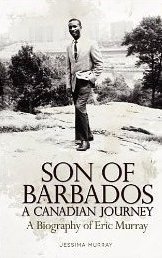 It’s wonderful when you see someone with the determination to put words on paper. We all have interesting and important stories to tell, but too few of us find the determination or time to write them, or record them in some form. Jess Murray did. She recently published Son of Barbados: A Canadian Journey, a biography of her late husband Eric Murray. Eric’s story is short, far too short. He died at age 46 of leukaemia, leaving behind Jess, two daughters and many opportunities. I worked with Eric at The Canadian Press/Broadcast News. He was one of the most interesting people I ever met.
It’s wonderful when you see someone with the determination to put words on paper. We all have interesting and important stories to tell, but too few of us find the determination or time to write them, or record them in some form. Jess Murray did. She recently published Son of Barbados: A Canadian Journey, a biography of her late husband Eric Murray. Eric’s story is short, far too short. He died at age 46 of leukaemia, leaving behind Jess, two daughters and many opportunities. I worked with Eric at The Canadian Press/Broadcast News. He was one of the most interesting people I ever met. Jess Murray’s book is highly personal and was written to honour Eric’s life. For me, it was reminder of how good people influence our lives without our really knowing it. When he was alive, Eric’s calm style was a reminder to me to be more thoughtful, more compassionate and less quick to shoot from the hip. He delivered that message again, through Jess’ book. That’s why people should write. I’m glad that Jess did.
Son of Barbados: A Canadian JourneyPublished by Xulon Press (March 28, 2012)Available at Amazon
Published on June 14, 2012 09:54
June 1, 2012
Masked Burglars in the Night
 Hmmm. Looks a bit interesting . . . It was the 3 a.m. clattering outside the bedroom window that told me he was back. He was into the recycling box looking for a snack, although the cans and bottles had been rinsed to eliminate tempting odours.
Hmmm. Looks a bit interesting . . . It was the 3 a.m. clattering outside the bedroom window that told me he was back. He was into the recycling box looking for a snack, although the cans and bottles had been rinsed to eliminate tempting odours.The next night, high-pitched shrieking and snarling beside the recycle box told me there was more than one. They were fighting over who would be first to check out the box. Raccoons are mostly creatures of the night. They usually go about their food forays in the darkness, masked and noisy burglars who give no consideration to people trying to sleep. Some are bold and will appear in daylight and ignore shouting and pot banging displays meant to make them go back to where they belong.
 . . . Don't think anyone will mind.
. . . Don't think anyone will mind.When a raccoon becomes a true nuisance, we get the wire box trap out. Nothing gets hurt, except their pride.
A couple years back we had a persistent raccoon that we named Hector. I would trap him, release him and discover him back a day or so later. Once I took him across the lake and released him. Two days later, we had a raccoon back. He looked like the one that I had brought across the lake, but that was impossible. It was a one mile swim back. Or, a hike of many miles around the lake. I trapped him again, spray painted his tail fluorescent orange, then boated him across the lake for release. Two days later, I was startled to see a raccoon standing on the deck and looking in the patio door window. He had an orange tail.I caught him again and transported him 10 miles to a municipal dump. I released him and told him to go crazy in the compost piles. Our latest raccoon has started to appear during the day and has an obsession about the bird feeders. I haven’t been able to see if he has a faded orange tail. If he does, I think I’ll give up the trapping and invite him to stay around as long as he wants. Any critter that persistent deserves a break.
Published on June 01, 2012 09:48
May 23, 2012
Fifty Shades of Grey
Well, it looks like déjà vu all over again.
There’s much tongue flapping over the book trilogy Fifty Shades of Grey. Some libraries refuse to carry it because they see it as pornography. The books are about a dominant-submissive affair between a manipulative rich guy and a naive younger woman.The trilogy began as a fan-fiction based on the Twilight vampire series. It was published as Master of the Universeon websites, and went through a couple of transformations before being published as Fifty Shades of Grey by Vintage Books, a part of Random House.
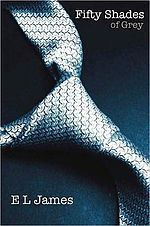 It is no literary gem but its popularity is phenomenal. Some libraries are reporting hold lists of more than 1,000 names. The trilogy has been tagged as “mommy porn” because of its popularity among married women over thirty.There was a similar phenomenon in the early 1960s when D. H. Lawrence’s 1928 Lady Chatterley’s Loverwas first published openly. Back then women carried the book deep inside their purses, snatching glances through the pages when no one was looking. In coffee shops there were whispered but excited conversations about the sex scenes and forbidden words in the book.Today, electronic tablet readers keep to yourself whatever you are reading. The conversations no longer are whispered, and of course what was once shocking now is simply titillating.The criticisms of the trilogy’s sexually explicit scenes, and the decisions of some libraries not to carry the books, are bizarre. Bookshelves in stores and libraries carry plenty of erotic material. Why shouldn’t the Fifty Shades of Greytrilogy be allowed to sit on those shelves just like Lady Chatterley or Tropic of Cancer?Fifty Shades of Greyauthor E. L. James is no D. H. Lawrence, and her work certainly is not literature. The writing has been called clunky and amateurish, but the stories are wildly popular.Ms. James has people reading, and that’s good news.
It is no literary gem but its popularity is phenomenal. Some libraries are reporting hold lists of more than 1,000 names. The trilogy has been tagged as “mommy porn” because of its popularity among married women over thirty.There was a similar phenomenon in the early 1960s when D. H. Lawrence’s 1928 Lady Chatterley’s Loverwas first published openly. Back then women carried the book deep inside their purses, snatching glances through the pages when no one was looking. In coffee shops there were whispered but excited conversations about the sex scenes and forbidden words in the book.Today, electronic tablet readers keep to yourself whatever you are reading. The conversations no longer are whispered, and of course what was once shocking now is simply titillating.The criticisms of the trilogy’s sexually explicit scenes, and the decisions of some libraries not to carry the books, are bizarre. Bookshelves in stores and libraries carry plenty of erotic material. Why shouldn’t the Fifty Shades of Greytrilogy be allowed to sit on those shelves just like Lady Chatterley or Tropic of Cancer?Fifty Shades of Greyauthor E. L. James is no D. H. Lawrence, and her work certainly is not literature. The writing has been called clunky and amateurish, but the stories are wildly popular.Ms. James has people reading, and that’s good news.

There’s much tongue flapping over the book trilogy Fifty Shades of Grey. Some libraries refuse to carry it because they see it as pornography. The books are about a dominant-submissive affair between a manipulative rich guy and a naive younger woman.The trilogy began as a fan-fiction based on the Twilight vampire series. It was published as Master of the Universeon websites, and went through a couple of transformations before being published as Fifty Shades of Grey by Vintage Books, a part of Random House.
 It is no literary gem but its popularity is phenomenal. Some libraries are reporting hold lists of more than 1,000 names. The trilogy has been tagged as “mommy porn” because of its popularity among married women over thirty.There was a similar phenomenon in the early 1960s when D. H. Lawrence’s 1928 Lady Chatterley’s Loverwas first published openly. Back then women carried the book deep inside their purses, snatching glances through the pages when no one was looking. In coffee shops there were whispered but excited conversations about the sex scenes and forbidden words in the book.Today, electronic tablet readers keep to yourself whatever you are reading. The conversations no longer are whispered, and of course what was once shocking now is simply titillating.The criticisms of the trilogy’s sexually explicit scenes, and the decisions of some libraries not to carry the books, are bizarre. Bookshelves in stores and libraries carry plenty of erotic material. Why shouldn’t the Fifty Shades of Greytrilogy be allowed to sit on those shelves just like Lady Chatterley or Tropic of Cancer?Fifty Shades of Greyauthor E. L. James is no D. H. Lawrence, and her work certainly is not literature. The writing has been called clunky and amateurish, but the stories are wildly popular.Ms. James has people reading, and that’s good news.
It is no literary gem but its popularity is phenomenal. Some libraries are reporting hold lists of more than 1,000 names. The trilogy has been tagged as “mommy porn” because of its popularity among married women over thirty.There was a similar phenomenon in the early 1960s when D. H. Lawrence’s 1928 Lady Chatterley’s Loverwas first published openly. Back then women carried the book deep inside their purses, snatching glances through the pages when no one was looking. In coffee shops there were whispered but excited conversations about the sex scenes and forbidden words in the book.Today, electronic tablet readers keep to yourself whatever you are reading. The conversations no longer are whispered, and of course what was once shocking now is simply titillating.The criticisms of the trilogy’s sexually explicit scenes, and the decisions of some libraries not to carry the books, are bizarre. Bookshelves in stores and libraries carry plenty of erotic material. Why shouldn’t the Fifty Shades of Greytrilogy be allowed to sit on those shelves just like Lady Chatterley or Tropic of Cancer?Fifty Shades of Greyauthor E. L. James is no D. H. Lawrence, and her work certainly is not literature. The writing has been called clunky and amateurish, but the stories are wildly popular.Ms. James has people reading, and that’s good news.
Published on May 23, 2012 08:11
May 10, 2012
A Menacing Reminder About Nature
The menace to manicured lawns is back. Huge patches of them everywhere; carpets of yellow now turning fluffy white so they can broadcast their seed to reproduce millions more of their own.
 Nature as it wants to beThe dandelion is a barbarian weed intent on savaging the coiffed look of our suburbias. They take over our carefully clipped grassy areas, setting down deep roots that support broad leaves to deprive grass and flowers of space and nutrients. Government bans of certain chemicals have taken away our best weapons for killing them.
Nature as it wants to beThe dandelion is a barbarian weed intent on savaging the coiffed look of our suburbias. They take over our carefully clipped grassy areas, setting down deep roots that support broad leaves to deprive grass and flowers of space and nutrients. Government bans of certain chemicals have taken away our best weapons for killing them.Dandelions are more than a menace, however. They are reminder that we humans still have much difficulty accepting nature as it is. We persist in trying to control it, and in reshaping it to our liking. We cut trees and bulldoze wide open spaces to separate and keep us safe from the perceived dangers of the dark woods. Then we plant little ornamental trees and bushes more to our liking.
Nature tries to resist our changes, but in the short term we are too powerful. We should not forget, however, that over the long run nature always wins. Nature is patient and resilient and will be healing its wounds and reshaping itself long after we have gone.
The dandelion is a reminder that we need to condition ourselves to accept nature as it is.
(Note: Stories of weird things in the dark woods can be found in Lights in Dark Forests, an e-book available in various electronic formats at Amazon or Smashwords.com.)
Published on May 10, 2012 06:15
May 4, 2012
Fade to Black
Of all the criticisms of the CBC during its continuing deep dive into mediocrity, none is more damning than a recent line from writer Peter C. Newman.
Newman, author 25 books and Canadian icon, in reviewing The Tower of Babble: Sins, Secrets and Successes Inside the CBC, wrote that when he came here as a refugee from Hungary, the CBC on radio taught him about Canada. Then, he adds:
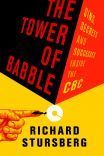 “While my love of country abides, the national broadcaster is no longer part of that equation.”
“While my love of country abides, the national broadcaster is no longer part of that equation.”What a devastating indictment of the CBC from one of Canada’s cultural elite. CBC, which considers itself at the centre of cultural elite, no longer is a part of most Canadians’ lives.
The Tower of Babble, published last month, was written by Richard Stursberg who was hired in 2004 to resuscitate the English services of the Mother Corp., and was dismissed six years later after losing head butting wars with the CBC president and its board of directors.
It is an interesting book for anyone who wants to know why dwindling numbers of Canadians pay any attention to the taxpayer supported radio and television network. It tells how labour problems have poisoned the workplace, and how refusal to change its CBC-knows-best culture has kept away audiences.
CBC once was a respected powerhouse of news and information. Today it tells us little that we don’t already know. It has lost its ability to tell Canadians in all parts of the country about trends in how we are living our lives. It has reduced itself to telling us what we already have heard is happening in Toronto and downtown Ottawa.
It is a sad story, but as they say nowadays, ‘Hey, things happen.’ There is little point moaning about the CBC, or trying to revive it. The CBC is in palliative care. It’s best now to let it go peacefully.
One of these days Peter Mansbridge will be standing at his teleprompter when the screen begins to fade. In the background, Ottawa reporter Terry Milewski will be trying desperately to get in the last words in his latest rant against the Harper government. Then the screen will go black.
Published on May 04, 2012 05:51
April 26, 2012
News from the Black Holes
I learned a couple of interesting things about my country and its people this week.
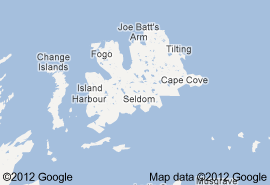 The New York Times told me about interesting developments on Fogo Island, a small piece of Newfoundland sitting in the North Atlantic. It is an isolated place, geographically and historically; population 2,700 with little work since the cod fishery collapsed.
The New York Times told me about interesting developments on Fogo Island, a small piece of Newfoundland sitting in the North Atlantic. It is an isolated place, geographically and historically; population 2,700 with little work since the cod fishery collapsed.Zita Cobb, a local who made a name and money for herself as a corporate executive in the U.S., returned to Fogo and began putting thought and much money into reviving the island. She formed the Shorefast Foundation, which is trying to revitalize the economy with a variety of projects, including art studios and a five-star inn.
From the Muskoka Weekender I learned about one man's inspiring late-life campaign against illiteracy. Clarence Brazier, who died April 15 at age 105, was 93 before he learned to read. When he did, he became a powerful advocate for adult literacy, taking his inspirational message to many, especially young people.
He won several awards for his work, including the Governor-General’s Caring Canadian Award and the Canada Post Literacy Award.
Brazier worked bush and mine jobs in which it was easier to keep secret his inability to read and write. His wife Angela covered for him, writing and reading on his behalf.
Stories like these - which tell us who we are and how we live our lives - are becoming fewer. Outside the major population centres there are expanding black holes from which we hear or read little about people and their lives. News media coverage has shrunk as smaller budgets mean fewer news staff and increased focus on news close by and cheaper to cover. More and more news coverage is of government and politics because it is pretty much spoon-fed news, quick and easy to report.
Thankfully there are some news people around, certainly at the New York Times and Muskoka Weekender, still telling us important stories about people.
Government does not a nation make. Nations are created by people living their lives, and reporting their stories should be a priority of any news organization.
Published on April 26, 2012 06:47
April 18, 2012
Spring of Fear
It’s hard to go through April without recalling the worries of the Spring of Fear nine years ago. April 2003 was when we all feared that a new disease named Severe Acute Respiratory Syndrome (SARS) would become a devastating pandemic.
SARS killed 800 people around the world, 44 in Canada, before disappearing in the autumn. We all breathed easier, although medical experts still warn that there will be other serious outbreaks created by new or mutating existing bugs.
Since then, there has been an important developing change in how public health thinks about viral outbreaks. Nine years ago, public health reacted to SARS, as they had with previous influenza pandemics, attacking full force, eventually winning, and then going back to business as usual. Now, however, there are indicators that public health will do more to predict outbreaks and work to prevent them.
A major force behind the change is Dr. Nathan Wolfe of Stanford University and founder of Global Viral Forecasting, which specializes in early detection and control of epidemics. He also is author of The Viral Storm: The Dawn of a New Pandemic Age published late last year.
Viral outbreaks occur regularly, but the public only hears about, or at least becomes concerned about, the ones that break loose and spread worldwide, like SARS, HIV and the killer influenzas.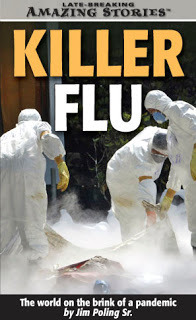 No more need
No more need
for books
like this?
Most outbreaks start with animal to human transmission. So Wolfe and his organization have taken to monitoring human-wild animal interfaces in Africa and Asia where people have close contact with bushmeat, or wild animals taken for food. They gather detailed information through field and lab work and data from social media, cell phone contact and other sources. They are trying to create a system that provides real-time information that will anticipate viral threats and block them before they spread.
Viral outbreaks spread as quickly as a 777 can fly from one continent to another. We live in one closely connected world and a deadly virus that gets loose, could quickly kill millions of us.
Developing an early warning system and turning public health’s thinking toward fighting possible outbreaks in advance is the best way to make sure killer viruses no longer get loose.
SARS killed 800 people around the world, 44 in Canada, before disappearing in the autumn. We all breathed easier, although medical experts still warn that there will be other serious outbreaks created by new or mutating existing bugs.
Since then, there has been an important developing change in how public health thinks about viral outbreaks. Nine years ago, public health reacted to SARS, as they had with previous influenza pandemics, attacking full force, eventually winning, and then going back to business as usual. Now, however, there are indicators that public health will do more to predict outbreaks and work to prevent them.
A major force behind the change is Dr. Nathan Wolfe of Stanford University and founder of Global Viral Forecasting, which specializes in early detection and control of epidemics. He also is author of The Viral Storm: The Dawn of a New Pandemic Age published late last year.
Viral outbreaks occur regularly, but the public only hears about, or at least becomes concerned about, the ones that break loose and spread worldwide, like SARS, HIV and the killer influenzas.
 No more need
No more need for books
like this?
Most outbreaks start with animal to human transmission. So Wolfe and his organization have taken to monitoring human-wild animal interfaces in Africa and Asia where people have close contact with bushmeat, or wild animals taken for food. They gather detailed information through field and lab work and data from social media, cell phone contact and other sources. They are trying to create a system that provides real-time information that will anticipate viral threats and block them before they spread.
Viral outbreaks spread as quickly as a 777 can fly from one continent to another. We live in one closely connected world and a deadly virus that gets loose, could quickly kill millions of us.
Developing an early warning system and turning public health’s thinking toward fighting possible outbreaks in advance is the best way to make sure killer viruses no longer get loose.
Published on April 18, 2012 05:01
April 3, 2012
The Lily of the Mohawks
So, the silliness has begun over the impending canonization of Kateri Tekakwitha as a saint of the Roman Catholic Church. The Toronto Star stirred the pot in January with a story about the 'damned Yankees' trying to steal away a Canadian saint.
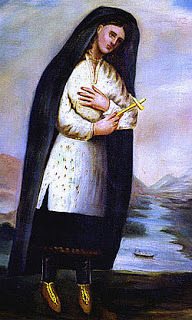 Kateri TekakwithaTekakwitha was a Mohawk child who was four in 1660 when her mother, father and brother died in a smallpox outbreak that ravaged Iroquois settlements in what is now upstate New York. She also had smallpox but survived with severe facial scarring and partial blindness. She was taken in by relatives and later began to develop devotion to Christianity brought by Jesuit missionaries.Many of the Iroquois tribes did not like the Jesuits or the new religion. Priests were killed, and people who followed their religion were marginalized and mocked.Kateri was among some Mohawks who moved with Jesuits to a Christian settlement now called Kahnawake on Montreal's south shore. She became known there for her piety, acts of penance and care of the sick. She died at only 24 and those at her bedside said that as she passed away, the smallpox scars on her face disappeared and she became beautiful to look at.The Catholic Church has been investigating miracles associated with her for well over 100 years. In 1943, the Vatican declared her a possibility for sainthood and beatified her in 1980. In October, she will officially become the church's first native North American saint.The fuss over whether Kateri was American or Canadian has been going on for decades. It will intensify now with her elevation to sainthood. It's totally ridiculous. She is neither an American, nor a Canadian saint. She is a saint of the Mohawks, who were a distinct nation long before the Europeans arrived, and still consider themselves a nation despite all the attempts to assimilate them.Kateri Tekakwitha is an interesting story, whether you believe in saints and miracles or not. More on Tekakwitha and the Mohawks will be found in Smoke Signals: The Native Takeback of North America's Tobacco Industry, my latest book that will be published this fall by Dundurn Press.
Kateri TekakwithaTekakwitha was a Mohawk child who was four in 1660 when her mother, father and brother died in a smallpox outbreak that ravaged Iroquois settlements in what is now upstate New York. She also had smallpox but survived with severe facial scarring and partial blindness. She was taken in by relatives and later began to develop devotion to Christianity brought by Jesuit missionaries.Many of the Iroquois tribes did not like the Jesuits or the new religion. Priests were killed, and people who followed their religion were marginalized and mocked.Kateri was among some Mohawks who moved with Jesuits to a Christian settlement now called Kahnawake on Montreal's south shore. She became known there for her piety, acts of penance and care of the sick. She died at only 24 and those at her bedside said that as she passed away, the smallpox scars on her face disappeared and she became beautiful to look at.The Catholic Church has been investigating miracles associated with her for well over 100 years. In 1943, the Vatican declared her a possibility for sainthood and beatified her in 1980. In October, she will officially become the church's first native North American saint.The fuss over whether Kateri was American or Canadian has been going on for decades. It will intensify now with her elevation to sainthood. It's totally ridiculous. She is neither an American, nor a Canadian saint. She is a saint of the Mohawks, who were a distinct nation long before the Europeans arrived, and still consider themselves a nation despite all the attempts to assimilate them.Kateri Tekakwitha is an interesting story, whether you believe in saints and miracles or not. More on Tekakwitha and the Mohawks will be found in Smoke Signals: The Native Takeback of North America's Tobacco Industry, my latest book that will be published this fall by Dundurn Press.

 Kateri TekakwithaTekakwitha was a Mohawk child who was four in 1660 when her mother, father and brother died in a smallpox outbreak that ravaged Iroquois settlements in what is now upstate New York. She also had smallpox but survived with severe facial scarring and partial blindness. She was taken in by relatives and later began to develop devotion to Christianity brought by Jesuit missionaries.Many of the Iroquois tribes did not like the Jesuits or the new religion. Priests were killed, and people who followed their religion were marginalized and mocked.Kateri was among some Mohawks who moved with Jesuits to a Christian settlement now called Kahnawake on Montreal's south shore. She became known there for her piety, acts of penance and care of the sick. She died at only 24 and those at her bedside said that as she passed away, the smallpox scars on her face disappeared and she became beautiful to look at.The Catholic Church has been investigating miracles associated with her for well over 100 years. In 1943, the Vatican declared her a possibility for sainthood and beatified her in 1980. In October, she will officially become the church's first native North American saint.The fuss over whether Kateri was American or Canadian has been going on for decades. It will intensify now with her elevation to sainthood. It's totally ridiculous. She is neither an American, nor a Canadian saint. She is a saint of the Mohawks, who were a distinct nation long before the Europeans arrived, and still consider themselves a nation despite all the attempts to assimilate them.Kateri Tekakwitha is an interesting story, whether you believe in saints and miracles or not. More on Tekakwitha and the Mohawks will be found in Smoke Signals: The Native Takeback of North America's Tobacco Industry, my latest book that will be published this fall by Dundurn Press.
Kateri TekakwithaTekakwitha was a Mohawk child who was four in 1660 when her mother, father and brother died in a smallpox outbreak that ravaged Iroquois settlements in what is now upstate New York. She also had smallpox but survived with severe facial scarring and partial blindness. She was taken in by relatives and later began to develop devotion to Christianity brought by Jesuit missionaries.Many of the Iroquois tribes did not like the Jesuits or the new religion. Priests were killed, and people who followed their religion were marginalized and mocked.Kateri was among some Mohawks who moved with Jesuits to a Christian settlement now called Kahnawake on Montreal's south shore. She became known there for her piety, acts of penance and care of the sick. She died at only 24 and those at her bedside said that as she passed away, the smallpox scars on her face disappeared and she became beautiful to look at.The Catholic Church has been investigating miracles associated with her for well over 100 years. In 1943, the Vatican declared her a possibility for sainthood and beatified her in 1980. In October, she will officially become the church's first native North American saint.The fuss over whether Kateri was American or Canadian has been going on for decades. It will intensify now with her elevation to sainthood. It's totally ridiculous. She is neither an American, nor a Canadian saint. She is a saint of the Mohawks, who were a distinct nation long before the Europeans arrived, and still consider themselves a nation despite all the attempts to assimilate them.Kateri Tekakwitha is an interesting story, whether you believe in saints and miracles or not. More on Tekakwitha and the Mohawks will be found in Smoke Signals: The Native Takeback of North America's Tobacco Industry, my latest book that will be published this fall by Dundurn Press.
Published on April 03, 2012 07:50
March 18, 2012
Millionaires in a World Gone Mad
It is 20 degrees Celsius and I am sitting overlooking the lake, reading and reflecting on the decline of the daily newspaper industry. The ice on the lake is blackening and perhaps will be out before April for the first time in history. Most of the snow is gone from the bush, unheard of in middle March.
 A World Gone MadThe world has gone mad, but it has little to do with the weather.
A World Gone MadThe world has gone mad, but it has little to do with the weather.
I am reading about the severance package handed out to Craig Dubow, former CEO of Gannett newspapers. Gannett owns USA Today and 80 other U.S. newspapers.
Dubow worked 30 years at Gannett, the last six as CEO. The Associated Press news service, on whose board he sat as a director, reported that Gannett's print advertising revenue dropped from $5.2 billion in 2005 to $2.5 billion last year. The company's stock price nosedived 86 percent while Dubow was CEO, dropping from $72.69 to $10.45.
He resigned at age 56 because of hip and back problems after having medical leaves in 2010 and 2011.
His severance? Thirty-two million dollars, a $6.2 million insurance policy, $70,000 in health insurance benefits, secretarial help, a home computer and financial counselling.
New York Times CEO Janet Robinson retired recently, snagging a $23 million adieu package.
More than three billion people in the world live on less than $2.50 a day. One billion children around the world - one in two - live in poverty.
Ontario is getting deeper into the casino-gambling business in a desperate move to keep the province from going bankrupt.
Truly, the world has gone mad.
 A World Gone MadThe world has gone mad, but it has little to do with the weather.
A World Gone MadThe world has gone mad, but it has little to do with the weather.I am reading about the severance package handed out to Craig Dubow, former CEO of Gannett newspapers. Gannett owns USA Today and 80 other U.S. newspapers.
Dubow worked 30 years at Gannett, the last six as CEO. The Associated Press news service, on whose board he sat as a director, reported that Gannett's print advertising revenue dropped from $5.2 billion in 2005 to $2.5 billion last year. The company's stock price nosedived 86 percent while Dubow was CEO, dropping from $72.69 to $10.45.
He resigned at age 56 because of hip and back problems after having medical leaves in 2010 and 2011.
His severance? Thirty-two million dollars, a $6.2 million insurance policy, $70,000 in health insurance benefits, secretarial help, a home computer and financial counselling.
New York Times CEO Janet Robinson retired recently, snagging a $23 million adieu package.
More than three billion people in the world live on less than $2.50 a day. One billion children around the world - one in two - live in poverty.
Ontario is getting deeper into the casino-gambling business in a desperate move to keep the province from going bankrupt.
Truly, the world has gone mad.
Published on March 18, 2012 05:58
March 2, 2012
Birth of a Shooting Star
It was 244 years ago in March, time of the declining snows, when a Shawnee woman lay in her bark birthing hut and watched a brilliant comet light up the early evening skies. Not long after, she gave birth to her third child, a son who would become a North American symbol of fighting for your culture against impossible odds.Some months later, the child had a naming feast, at which an elder pronounced him Tecumtha, or Tecumseh -- Shooting Star.Tecumseh became a Shawnee war chief at the time North American Indians were being driven farther away from their homelands by colonial advancement. He travelled thousands of miles on horseback trying to organize a pan-Indian confederation that would stop the westward march of the new American society.He is best remembered as the man who fought alongside General Isaac Brock in the War of 1812 against the Americans. However, Tecumseh was no Canadian patriot. He fought for Canada but had no more liking for the British Canadians than the Americans. His sole interest was to hold some of the homeland being taken by people from afar.
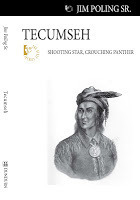 His leadership and the battles he won against the Americans were important to Canada, however. His leadership inspired confidence and helped stiffen Canadian spines, which Brock himself noted were somewhat lacking.In October 1813, Tecumseh died in battle along the Thames River not far from Chatham Ontario. He fell while trying to hold back the troops of William Henry Harrison, governor of Indiana Territory, and who would become president of the United States.More on Tecumseh can be found in: Tecumseh: Shooting Star, Crouching Panther published by Dundurn.
His leadership and the battles he won against the Americans were important to Canada, however. His leadership inspired confidence and helped stiffen Canadian spines, which Brock himself noted were somewhat lacking.In October 1813, Tecumseh died in battle along the Thames River not far from Chatham Ontario. He fell while trying to hold back the troops of William Henry Harrison, governor of Indiana Territory, and who would become president of the United States.More on Tecumseh can be found in: Tecumseh: Shooting Star, Crouching Panther published by Dundurn.
 His leadership and the battles he won against the Americans were important to Canada, however. His leadership inspired confidence and helped stiffen Canadian spines, which Brock himself noted were somewhat lacking.In October 1813, Tecumseh died in battle along the Thames River not far from Chatham Ontario. He fell while trying to hold back the troops of William Henry Harrison, governor of Indiana Territory, and who would become president of the United States.More on Tecumseh can be found in: Tecumseh: Shooting Star, Crouching Panther published by Dundurn.
His leadership and the battles he won against the Americans were important to Canada, however. His leadership inspired confidence and helped stiffen Canadian spines, which Brock himself noted were somewhat lacking.In October 1813, Tecumseh died in battle along the Thames River not far from Chatham Ontario. He fell while trying to hold back the troops of William Henry Harrison, governor of Indiana Territory, and who would become president of the United States.More on Tecumseh can be found in: Tecumseh: Shooting Star, Crouching Panther published by Dundurn.
Published on March 02, 2012 05:55



